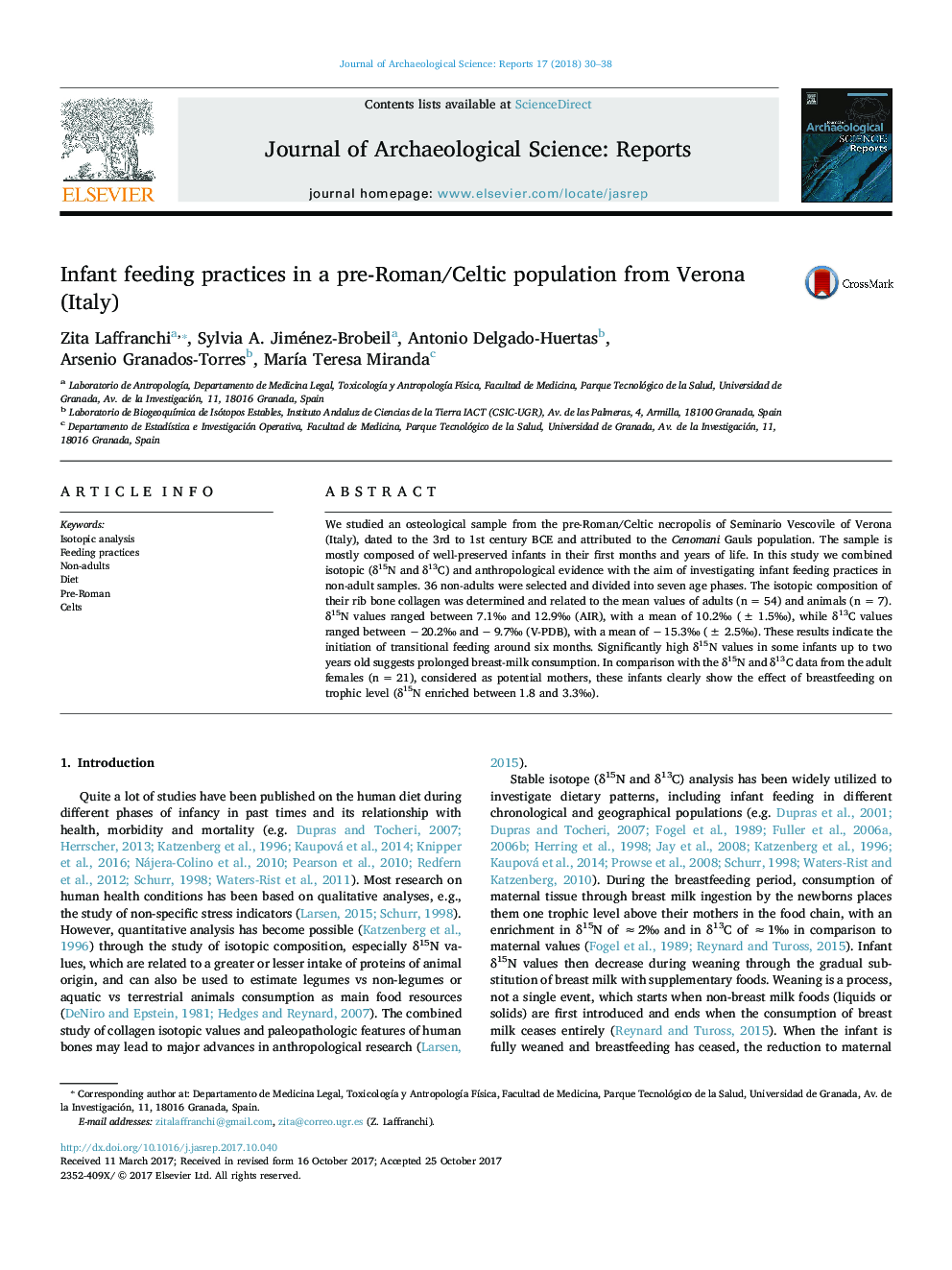| Article ID | Journal | Published Year | Pages | File Type |
|---|---|---|---|---|
| 7445262 | Journal of Archaeological Science: Reports | 2018 | 9 Pages |
Abstract
We studied an osteological sample from the pre-Roman/Celtic necropolis of Seminario Vescovile of Verona (Italy), dated to the 3rd to 1st century BCE and attributed to the Cenomani Gauls population. The sample is mostly composed of well-preserved infants in their first months and years of life. In this study we combined isotopic (δ15N and δ13C) and anthropological evidence with the aim of investigating infant feeding practices in non-adult samples. 36 non-adults were selected and divided into seven age phases. The isotopic composition of their rib bone collagen was determined and related to the mean values of adults (n = 54) and animals (n = 7). δ15N values ranged between 7.1â° and 12.9â° (AIR), with a mean of 10.2â° (± 1.5â°), while δ13C values ranged between â 20.2â° and â 9.7â° (V-PDB), with a mean of â 15.3â° (± 2.5â°). These results indicate the initiation of transitional feeding around six months. Significantly high δ15N values in some infants up to two years old suggests prolonged breast-milk consumption. In comparison with the δ15N and δ13C data from the adult females (n = 21), considered as potential mothers, these infants clearly show the effect of breastfeeding on trophic level (δ15N enriched between 1.8 and 3.3â°).
Related Topics
Social Sciences and Humanities
Arts and Humanities
History
Authors
Zita Laffranchi, Sylvia A. Jiménez-Brobeil, Antonio Delgado-Huertas, Arsenio Granados-Torres, MarÃa Teresa Miranda,
